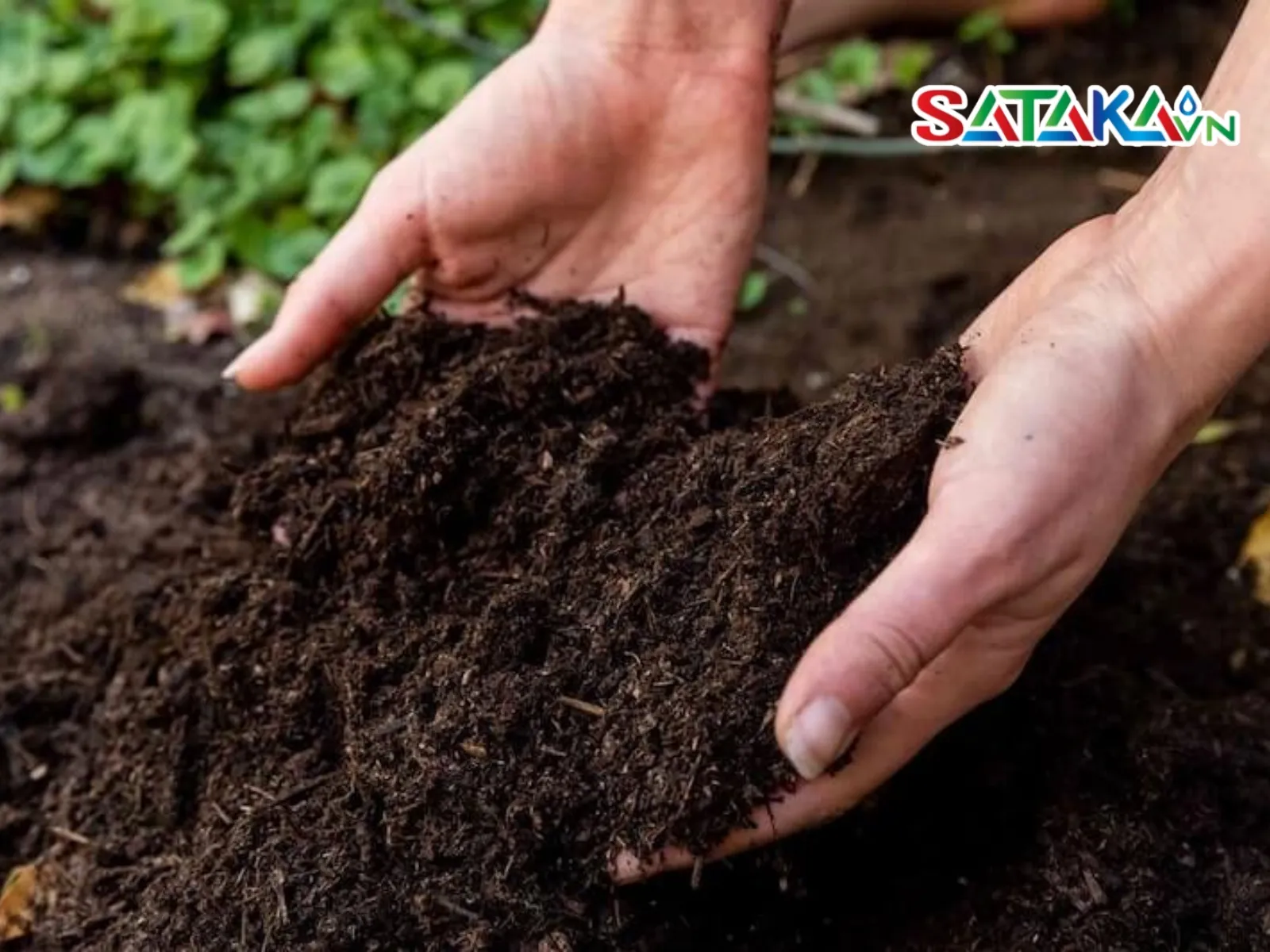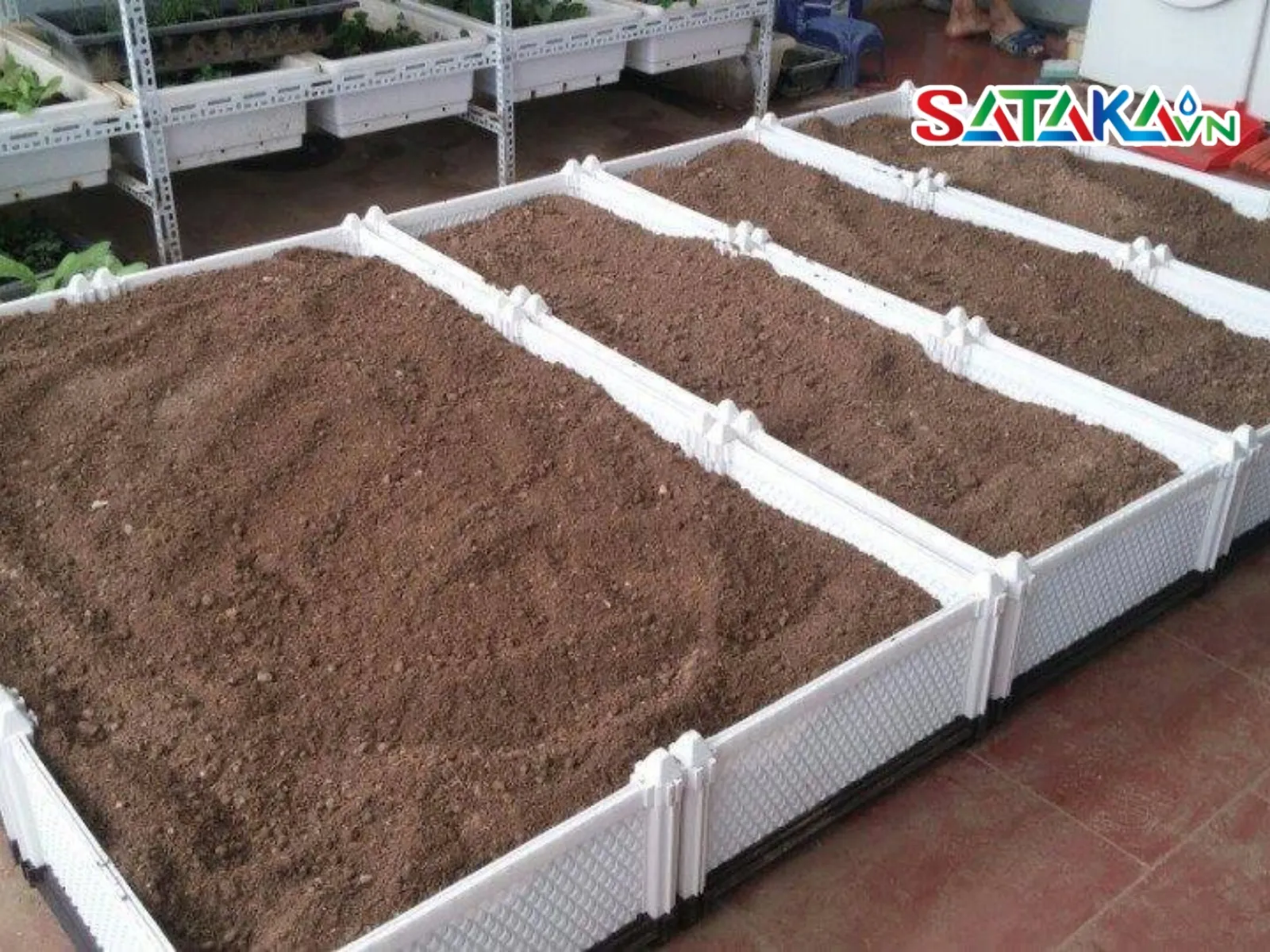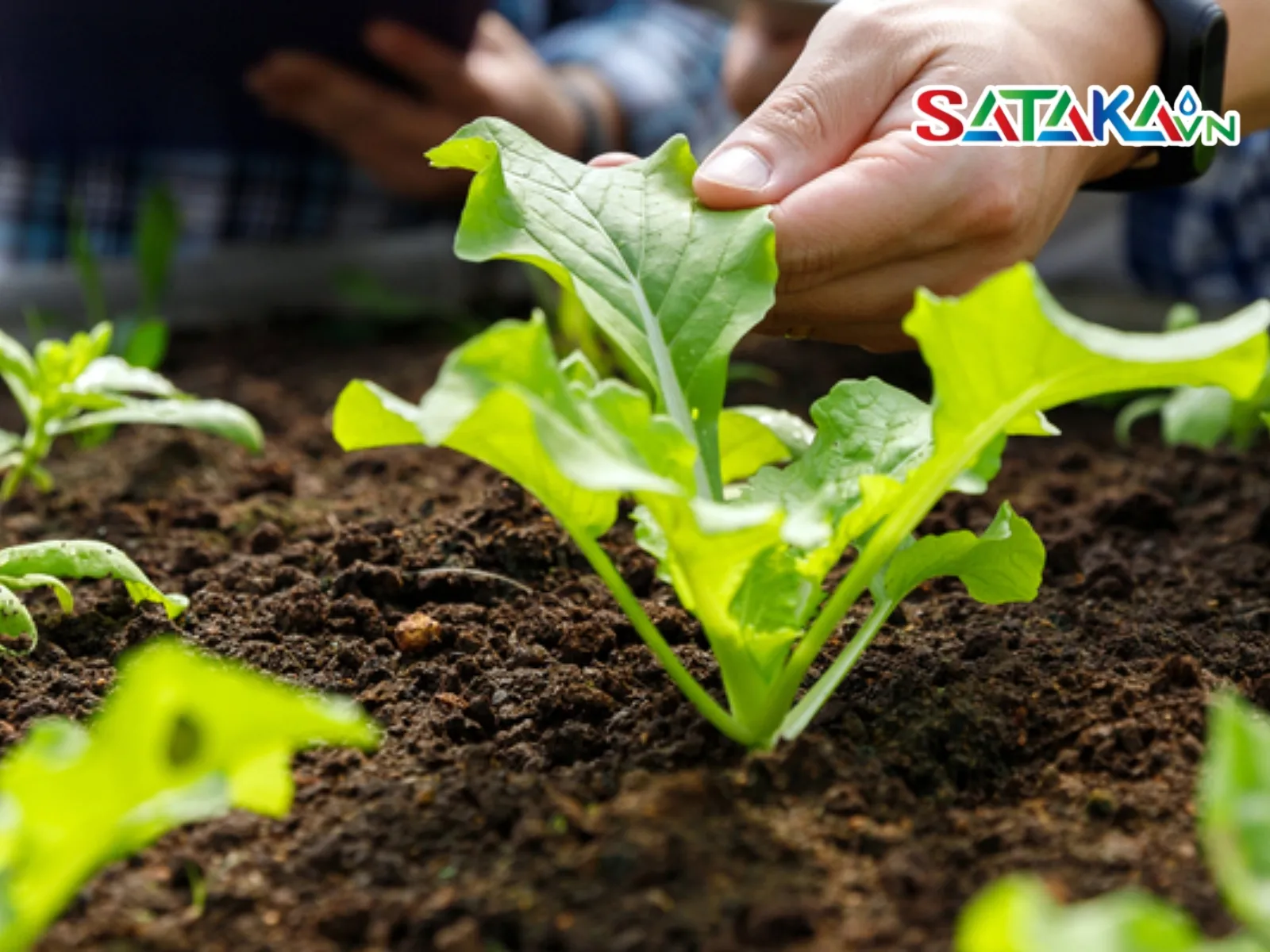Learn how to simply prepare soil for growing vegetables at home, making the soil loose and rich in nutrients, ensuring vegetables grow well, limiting pests and diseases, and increasing harvest yield.
To cultivate a lush and thriving vegetable garden, mastering how to prepare the soil is a crucial factor. Soil is the primary source of nutrients for plants, and if the soil quality is poor, plants will struggle to grow healthily. Proper soil preparation and improvement not only help vegetables grow vigorously but also reduce pests and increase harvest yields. In this article, Sataka will provide detailed guidance on how to prepare soil for planting vegetables at home, making it easy for you to apply to your garden.
Before diving into the methods of preparing soil for vegetables, the first important task is to treat and improve the soil. Over time, soil can become compacted, infertile, discolored, and filled with harmful pathogens. This affects plant health and reduces vegetable yields. Therefore, soil preparation is a necessary step to improve soil structure, provide adequate nutrients, and create optimal conditions for vegetable growth.

Soil improvement helps eliminate pathogens and pests such as aphids and worms while ensuring there are no harmful substances like lead, mercury, or benzene. Additionally, the soil must meet essential conditions such as organic content, drainage, and moisture retention, allowing vegetables to grow healthily and vigorously.
The proper ratio of soil, fertilizers, and soil amendments is crucial in creating an environment conducive to vegetable growth. The ideal ratio is typically 5 parts soil, 2 parts fertilizer, and 3 parts soil amendments. Below are specific steps to process and prepare soil for planting vegetables:
To ensure the soil is free from pathogens and provides a suitable environment for plants, you need to treat old soil or prepare 5 parts of new soil. Start by adding lime to balance pH levels, neutralize acidity, reduce salinity, and provide calcium to the soil.
After adding lime, thoroughly mix the soil and allow it to aerate. This allows the soil to absorb oxygen, enhance beneficial microbial activity, and eliminate pathogens and pests. This foundational step sets the stage for successful vegetable planting.

How to prepare soil for growing vegetables
To improve soil aeration, mix in 3 parts of soil amendments. These can include agricultural byproducts such as peanut shells, soybean residue, fresh rice husks, or coconut coir. These materials not only loosen the soil but also improve aeration, retain moisture, and provide natural organic nutrients to plants.
To ensure the soil has adequate nutrients, add 2 parts organic fertilizer or worm castings. Worm castings are an excellent choice as they are a safe bio-product that helps retain soil moisture, provide soluble nutrients, and maintain soil aeration for extended periods. Additionally, you can use diluted water containing Trichoderma bacteria to enhance beneficial microorganisms in the soil.
Here are steps and useful tips for effective soil preparation for vegetables at home:

Experience in how to prepare land for growing vegetables

Tips for improving soil at home
In summary, preparing soil for vegetables at home is straightforward yet highly effective if done correctly. Using organic fertilizers, rotating crops, and improving soil after each harvest all contribute to maintaining soil quality. Sataka hopes the tips and experiences shared in this article will help you successfully care for your vegetable garden, providing clean and safe food for your family.